Pete’s Gear: Univox Super-Fuzz
Introduction: Pete Townshend and the Univox Super-Fuzz
Update: Pete also used the otherwise identical Shaftesbury Duo Fuzz, which was made by Shin-ei in Japan for Rose-Morris for the UK market, in the late 1960s/early 1970s. This page will be updated accordingly.
The U-1093/U-1095 Univox Super-Fuzz fuzz pedal represents a key part of Pete Townshend’s classic stage sound. He used versions of the Univox Super-Fuzz between 1968 and 1978. You can hear the effect clearly in recordings from this era — the signature “buzz saw” sound during leads and rave-up outros.
Pete began using the Super-Fuzz in late 1968, likely November or December, with the first documented occasion being the Rolling Stones Rock and Roll Circus in Wembley on 11 Dec. 1968, which also represents Pete’s and John’s first known use of their Hiwatt-badged Sound City stacks.
Prior to this, he used a variety of fuzz pedals in his setup, including the Sola Sound Tone Bender in 1965/66, Marshall Supa Fuzz in 1967–68, as well as employing a Grampian spring reverb unit for distortion in 1967–68, and, most recently as the August 1968 U.S. tour, the Dallas Arbiter Fuzz Face.
He used the first version of the Univox Super-Fuzz, the metal grey version, on stage from late 1968 to mid- to late-1971, when he switched to the reddish-orange die-cast version with the large pedal surface. He used this version until 1978, where the last use of the pedal was 15 May 1978, at the Shepperton show filmed for The Kids Are Alright.
In 1979, he switched to the MXR Dyna-Comp compression pedal to fulfill the need for added boost on leads and outros.
Timeline
- First known use:
- 11 Dec. 1968 – Rolling Stones Rock and Roll Circus, Wembley (appears in the The Kids Are Alright film).
- Last use:
- 25 May 1978 – Shepperton Studios, Middlesex, UK (for The Kids Are Alright film).
Super-Fuzz features
Both versions of the Univox Super-Fuzz featured an on-off switch — toggle type on the early version, pad on the later version — and two controls, “Balance” and “Expander,” plus a tone switch. It has been said that the Super-Fuzz didn’t need controls — it was either on or off, and no in between.
Signal chain
Pete used the Super-Fuzz effect pedal in line from the guitar to the amplifier. The unit was always placed right next to the drum kit, just in front of the guitar amplifiers, often taped down to the stage with gaffa tape.
Manufacturer’s Information
Quote from Univox catalog
From a later U-1095 version — a model Pete did not use.
The ultimate fuzz, the Univox Super Fuzzz! Fantastic fuzzz variations — brilliant to mellow — short to hanging — plan fuzz to Super Fuzzz! Unequaled sustain. Produces the completest range of harmonic tones. Balance control to blend normal tones and fuzzz. Expander control for unending sustain. Tone switch for conventional fuzzz or new harmonics. Full tread switch, no buttons to “miss.” Solid die-cast housing. UNIVOX Super Fuzzz U-1095
Quote from Pete Townshend
From April 1980 issue of Sound International article, courtesy Joe G’s site.
I always had a fuzzbox but that was always just to make a loud noise at the end when I started smashing things up.
Photo Gallery
1968–1971
Photos of the original grey version Univox Super-Fuzz.
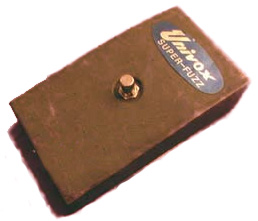
Generic original grey Univox Super-Fuzz.
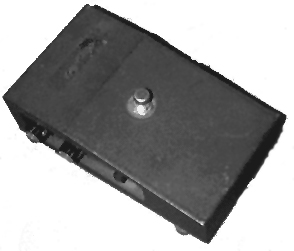
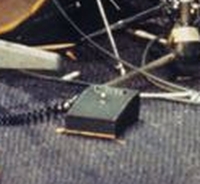
Ca. 1970, closeup of the original-model Super-Fuzz.
Stage use of Univox Super-Fuzz (grey)
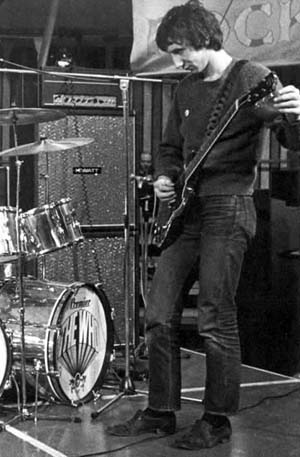
Ca. December 1968, the Rolling Stones Rock and Roll Circus rehearsals, with earliest known use of the Univox Super-Fuzz. This month also represents Pete’s first use of Hiwatt-badged Sound City 4×12 cabinets and consistent use of the Gibson SG Special guitar.
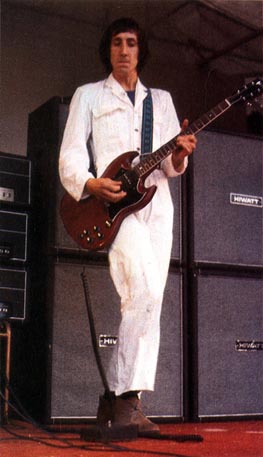
Ca. 1969, onstage with the original-model Univox Super-Fuzz. Amps are Hiwatt-badged customized Sound City L100 (top), pre-nameplate Hiwatt CP103s. Guitar is Gibson SG Special.
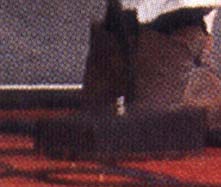
Close-up of Pete’s Univox Super-Fuzz ca. 1969 from previous photo.
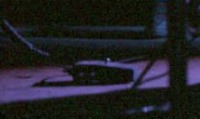
Ca. 1969, closeup of the original-model Super-Fuzz.
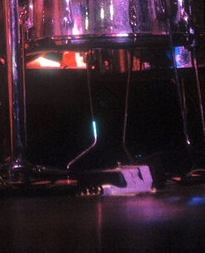
Ca. 1970, closeup of the original-model Super-Fuzz, taped down to the stage with white gaffa tape.
1971–1978
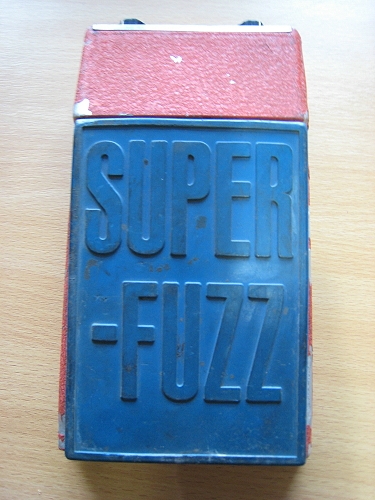
Pete’s Univox Super Fuzz. Photo courtesy rockstarsguitars.com.
Orange die-cast version details
Photos of a generic orange die-cast version Univox Super-Fuzz.
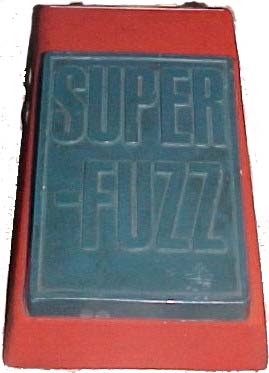
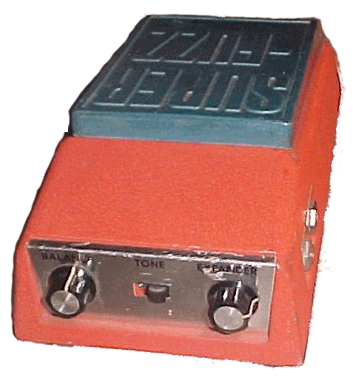
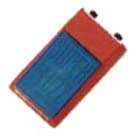
Stage use of Univox Super-Fuzz (orange)
Views of Pete’s stage use of the orange die-cast Univox Super-Fuzz.
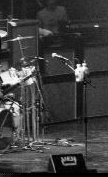

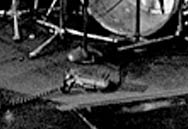
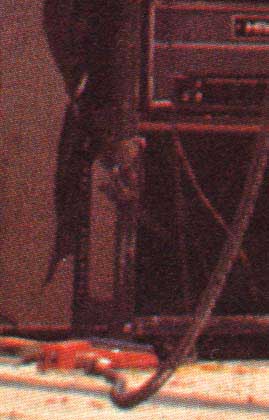
View of Pete’s stage use of the orange die-cast Univox Super-Fuzz, ca. 1972.
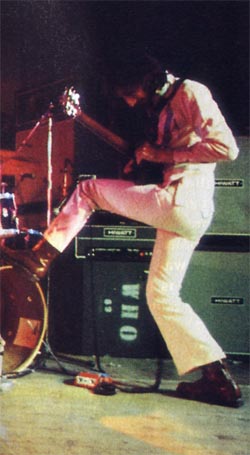
Ca. 1971, Pete hovering over orange die-cast Univox Super-Fuzz.
Resources and Information
Manufacturer
- Univox.org: univox.org (offline)
- Contains schematics and history of Univox/Unicord.
- Coda Effects: Univox Superfuzz History
Information
- Fuzz Guts (Uzzfay Utsgay): members.fortunecity.com/uzzfay/superfuzz1/superfuzz1.html (offline) (black/grey style) and members.fortunecity.com/uzzfay/sf3/sf3.html (offline) (Orange/Blue style)
- Photos and schematics of classic fuzz pedals.
- Effects Heaven Schematics: schematicheaven.com/effects.htm